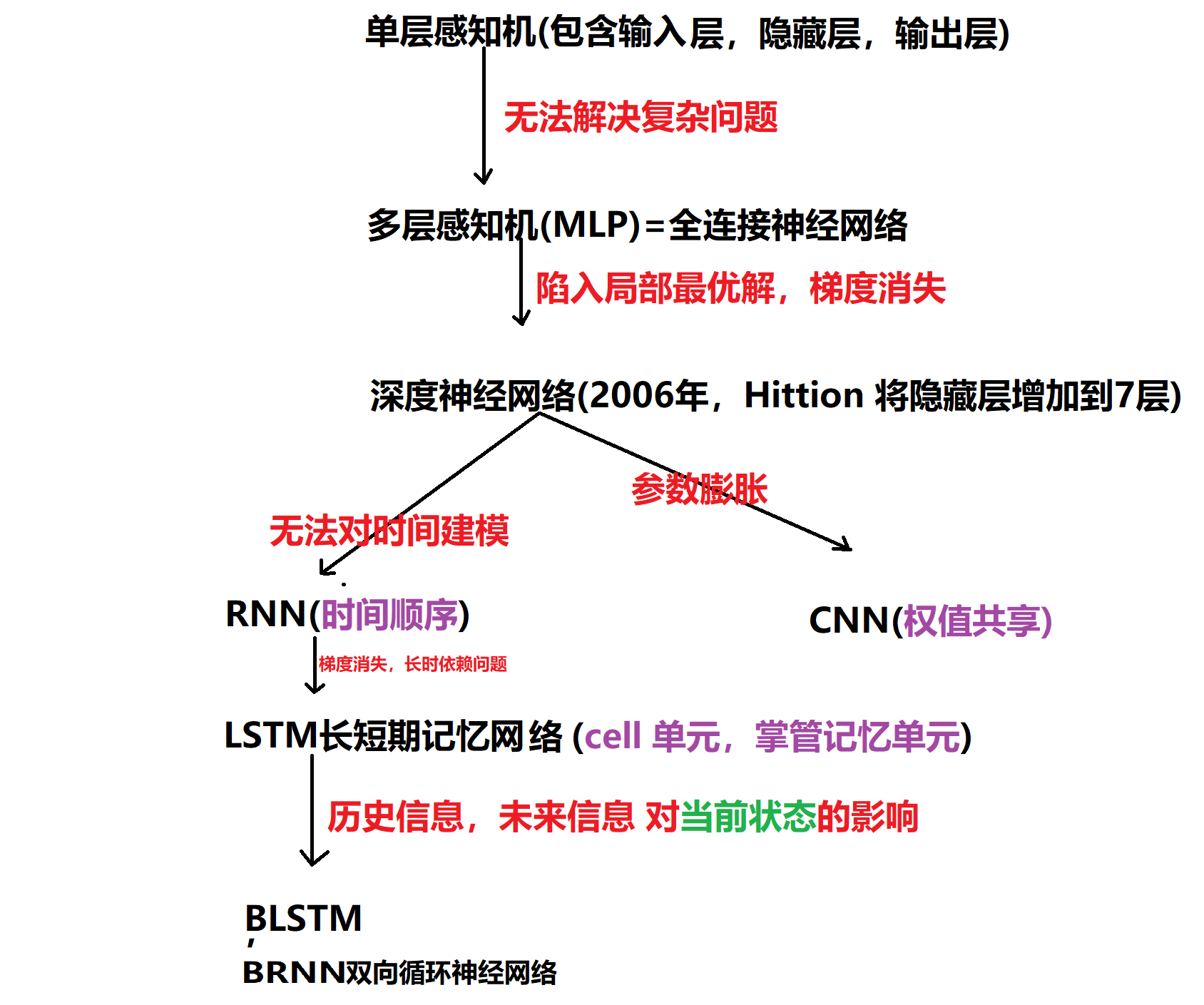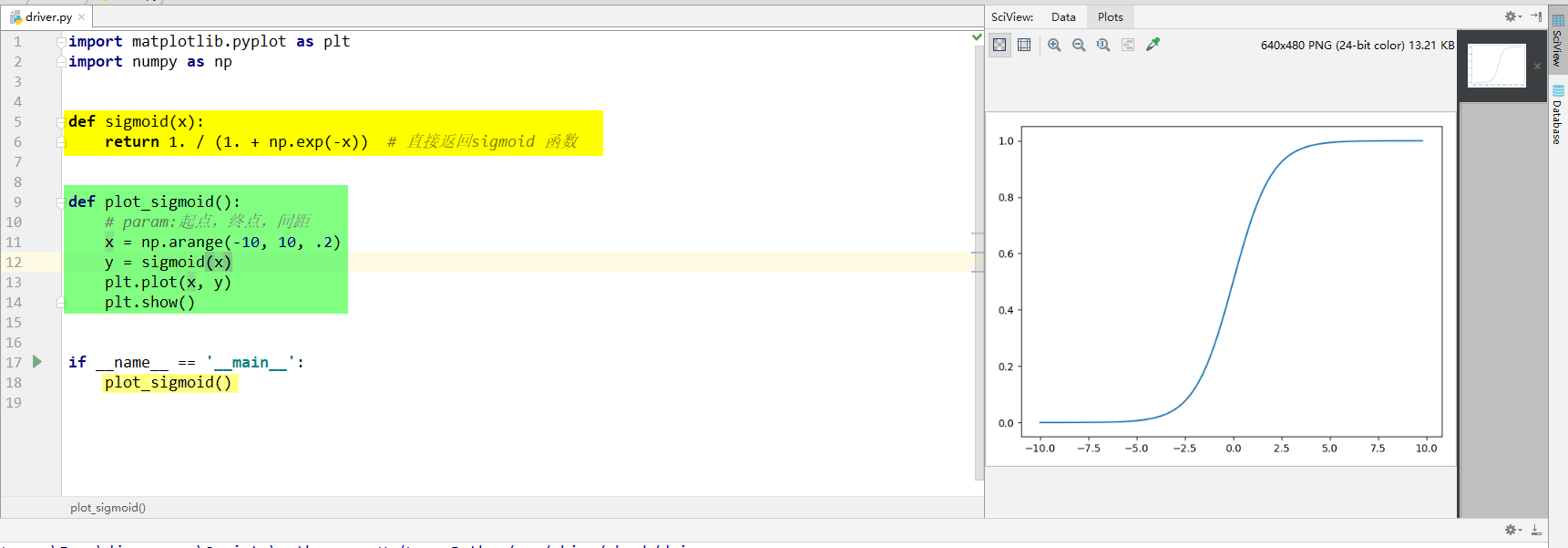神经网络笔记
Tensorflow 官方文档
http://www.tensorfly.cn/tfdoc/api_docs/python/nn.html
神经网络分类

参考文献
https://blog.csdn.net/lff1208/article/details/77717149
https://www.leiphone.com/news/201702/ZwcjmiJ45aW27ULB.html
Python3用matplotlib绘制sigmoid函数

双曲余弦 双曲正弦 双曲正切
import numpy as np
import matplotlib.pyplot as plt
plt.rcParams['font.sans-serif'] = ['SimHei'] # 用来正常显示中文标签
plt.rcParams['axes.unicode_minus'] = False # 用来正常显示负号
def plot_tanh():
# linspace的第一个参数表示起始点,第二个参数表示终止点,第三个参数表示数列的个数
# x = np.linspace(-10, 10, 1000)
# x = np.arange(-10, 10, .002)
x = np.arange(-10, 10, .002)
y = np.tanh(x)
plt.plot(x, y,label='label2',color="red",linewidth=2)
plt.xlabel("abscissa横坐标")
plt.ylabel("ordinate纵坐标")
plt.title("双曲图")
plt.show()
def plot_sinh():
# linspace的第一个参数表示起始点,第二个参数表示终止点,第三个参数表示数列的个数
# x = np.linspace(-10, 10, 1000)
# x = np.arange(-10, 10, .002)
x = np.arange(-10, 10, .002)
y = np.sinh(x)
plt.plot(x, y,label='label',color="green",linewidth=6)
plt.xlabel("abscissa横坐标")
plt.ylabel("ordinate纵坐标")
plt.title("双曲图")
plt.show()
def plot_cosh():
# linspace的第一个参数表示起始点,第二个参数表示终止点,第三个参数表示数列的个数
x = np.linspace(-10, 10, 1000)
# x = np.arange(-10, 10, .002)
# x = np.arange(-10, 10, .002)
y = np.cosh(x)
plt.plot(x, y,label='label3',color="blue",linewidth=9)
plt.xlabel("abscissa横坐标")
plt.ylabel("ordinate纵坐标")
plt.title("双曲图")
plt.show()
def plot_coth():
# linspace的第一个参数表示起始点,第二个参数表示终止点,第三个参数表示数列的个数
x = np.linspace(-10, 10, 1000)
# x = np.arange(-10, 10, .002)
# x = np.arange(-10, 10, .002)
y = (np.cosh(x)/np.sinh(x))
plt.plot(x, y,label='label4',color="yellow",linewidth=9)
plt.xlabel("abscissa横坐标")
plt.ylabel("ordinate纵坐标")
plt.title("双曲图")
plt.show()
if __name__ == '__main__':
# plot_tanh()
# plot_sinh()
# plot_cosh()
plot_coth()
利用tensorflow 接口实现常见的激活函数图
import matplotlib.pyplot as plt
import numpy as np
import tensorflow as tf
# Your CPU supports instructions that this TensorFlow binary was not compiled to use: AVX2
import os
os.environ['TF_CPP_MIN_LOG_LEVEL'] = '2'
# 解决乱码手段
plt.rcParams['font.sans-serif'] = ['SimHei'] # 用来正常显示中文标签
plt.rcParams['axes.unicode_minus'] = False # 用来正常显示负号
def plot_sigmoid():
x = tf.constant(np.arange(-10, 10, .2), dtype=tf.float32)
print(x)
sess = tf.Session()
print(sess)
# y=sess.run(tf.log_sigmoid(x))
y = sess.run(tf.sigmoid(x)) # sigmoid激活函数
y1 = sess.run(tf.tanh(x)) # tanh激活函数
# y2 = sess.run(tf.nn.relu(x)) # relu激活函数
print(y)
print(y1)
# print(y2)
plt.plot(np.arange(-10, 10, .2), y)
plt.plot(np.arange(-10, 10, .2), y1)
# plt.plot(np.arange(-10, 10, .2), y2)
plt.xlabel("abscissa横坐标")
plt.ylabel("ordinate纵坐标")
plt.title("常见各种激活函数")
plt.show()
if __name__ == '__main__':
plot_sigmoid()
Softmax激励函数
import matplotlib.pyplot as plt
import numpy as np
import tensorflow as tf
# Your CPU supports instructions that this TensorFlow binary was not compiled to use: AVX2
# s.environ["TF_CPP_MIN_LOG_LEVEL"]='1' # 这是默认的显示等级,显示所有信息
# os.environ["TF_CPP_MIN_LOG_LEVEL"]='2' # 只显示 warning 和 Error
# os.environ["TF_CPP_MIN_LOG_LEVEL"]='3' # 只显示 Error
import os
os.environ['TF_CPP_MIN_LOG_LEVEL'] = '1'
# 解决乱码手段
plt.rcParams['font.sans-serif'] = ['SimHei'] # 用来正常显示中文标签
plt.rcParams['axes.unicode_minus'] = False # 用来正常显示负号
def plot_Softmax():
x = tf.constant(np.arange(-10, 10, .2), dtype=tf.float32)
print(x)
sess = tf.Session()
print(sess)
y = sess.run(tf.nn.softmax(x)) # Softmax激活函数
print(y)
plt.plot(np.arange(-10, 10, .2), y)
plt.xlabel("abscissa横坐标")
plt.ylabel("ordinate纵坐标")
plt.title("Softmax 激活函数")
plt.show()
if __name__ == '__main__':
plot_Softmax()
水平卷积核/垂直卷积核(过滤器和卷积核是一个意思)


padding
通过一个3*3的卷积核来对6*6的图像进行卷积,得到了一幅4*4的图像。
假设输入/原始图像大小为n*n,过滤器大小为f*f,则输出图像大小则为(n-f+1)*(n-f+1)。
这样做卷积运算的缺点:(1)卷积图像的大小会不断缩小;(2)丢掉了很多图像边缘的信息。
卷积神经网络CNN参考文献
posted on 2019-03-19 10:33 Indian_Mysore 阅读(261) 评论(0) 编辑 收藏 举报





